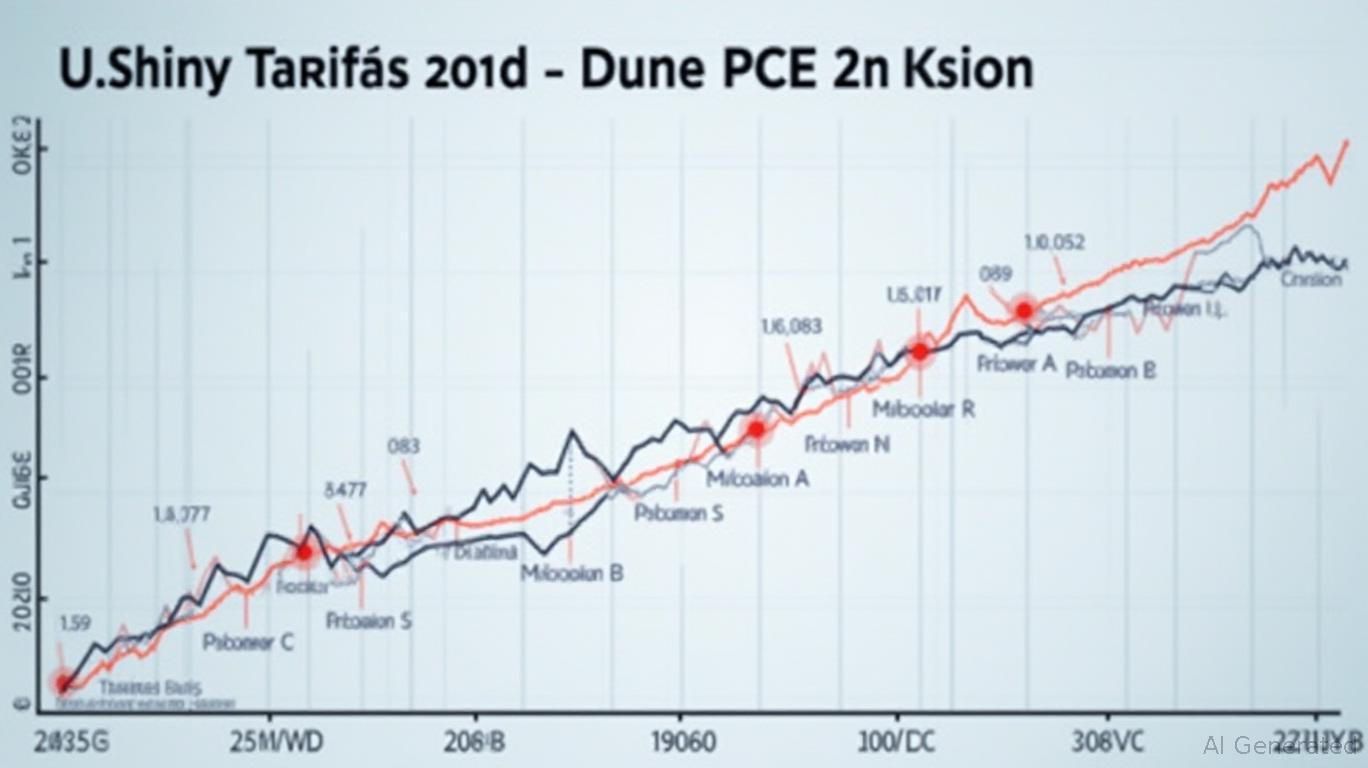The Fed's Data-Driven Pause: Navigating Rate Cut Timing Amid Tariff-Driven Inflation Risks
The interplay between geopolitical trade policies and monetary policy has never been more consequential for investors. As the Federal Reserve maintains a "data-dependent" stance on interest rates, the lingering inflationary tailwinds from Trump-era tariffs create a precarious balancing act for markets. With bond yields oscillating and equity sectors fracturing, the path forward demands a nuanced approach to capital allocation. Here's how to parse the risks and opportunities.
The Inflation Lag: Tariffs as a Stealth Catalyst

The Trump administration's trade war with China, which escalated through 2025 with tariffs on $380 billion in imports, has left a lasting imprint on inflation dynamics. While initial tariff hikes in 2018–2019 caused immediate price spikes in sectors like electronics and automobiles, the full impact of supply chain disruptions and reduced competition has taken years to manifest. By 2025, tariffs contributed to a 0.9% drag on U.S. GDP, per Tax Foundation models, while core goods prices rose 0.3% in Q1 2025 alone due to partial tariff pass-through (β=0.54).
The critical insight? Inflation is no longer a "transitory" issue but a structural challenge rooted in trade policy. Sectors like semiconductors, autos, and rare earth-dependent industries remain vulnerable to lingering cost pressures, even as headline inflation moderates. This creates a conundrum for the Fed: cutting rates prematurely risks reigniting inflation, but waiting too long could deepen economic stagnation.
The Fed's Tightrope: Data Dependency and Market Pricing Gaps
The Federal Reserve has made its stance clear: rate decisions hinge on inflation, employment, and financial stability metrics. Yet markets are pricing in a starkly different narrative.
Current derivatives markets assign a 68% probability of a rate cut by December, betting on softening inflation data. However, the Fed's caution is justified:
1. Lag Effects: Tariff-driven input costs (e.g., Chinese rare earths, Canadian potash) could resurface in late 2025, complicating the Fed's inflation targeting.
2. Policy Uncertainty: Ongoing trade disputes, including the June 2025 U.S.-China trade deal suspending further tariff hikes, add volatility to global supply chains.
This disconnect creates a tactical window: short-term Treasuries (e.g., 2–5 year maturities) offer a hedge against uncertainty, while longer-duration bonds remain risky until clarity emerges post-July's inflation reports.
Sector Rotations: Defensives Over Offensives
Equity investors must navigate a bifurcated landscape. Rate-sensitive sectors like real estate and consumer discretionary are vulnerable to prolonged volatility, while defensive sectors present resilience:
- Utilities and Healthcare: These sectors, insulated from tariff impacts and rate sensitivity, offer stable cash flows.
- Energy: While exposed to geopolitical risks, energy equities (e.g., E&P firms) benefit from China's rare earth restrictions, which may drive alternative energy demand.
Investment Playbook: Position for the Fed's Crossroads
- Short-Term Treasuries: Allocate 20–30% of fixed-income portfolios to 2–5 year Treasuries. Their low duration shields against yield curve shifts, while their liquidity provides flexibility ahead of December's potential rate cut.
- Defensive Equities: Overweight utilities (e.g., NextEra Energy) and healthcare (e.g., Johnson & Johnson), which have underperformed in 2025 but offer downside protection.
- Avoid Rate-Sensitive Plays: Steer clear of REITs and consumer discretionary until Q4 data confirms a rate-cut path.
Final Call: Patience Pays
The Fed's reluctance to act until post-July data clarity underscores the risks of premature bets. While a December rate cut remains likely, investors should prioritize capital preservation until inflation's tariff-driven tailwinds subside. For now, the mantra is clear: shorten duration, favor defensives, and wait for the Fed's signal.


Comments
No comments yet